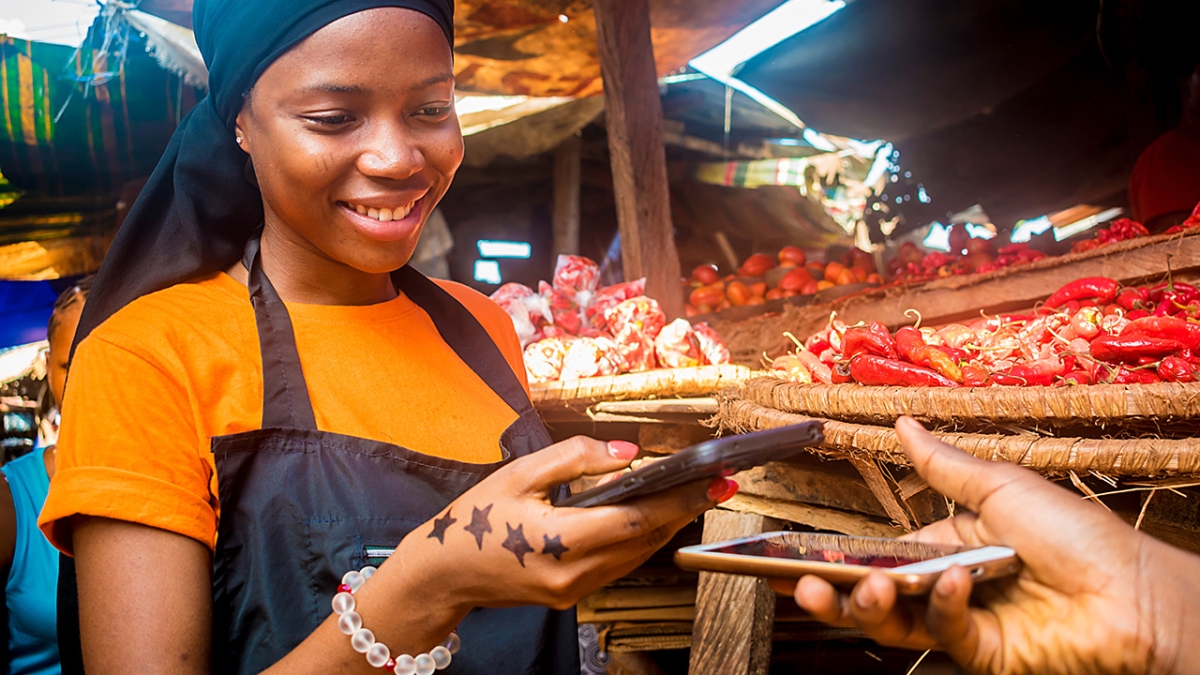Source: Global Findex.
Note: CEMAC = Central African Economic and Monetary Community; WAEMU = West African Economic and Monetary Union.
A scissor effect connected with the spread of mobile banking?
Financial inclusion of both women and men has increased significantly in SSA over the past decade. According to the World Bank, bank coverage has reached the majority of people in SSA (55 percent of the population in 2021, compared to 23 percent in 2011; see figure 1), with relative catch-up effects compared to middle- and high-income countries (72 and 96 percent of the population, respectively). An even greater increase was observed in the WAEMU and the CEMAC, where bank penetration rates increased nearly fourfold. This was made possible by the rapid development of mobile telephony and mobile banking, which compensate for the weaknesses of fixed-line telephony infrastructures and the traditional banking sector. Mobile bank accounts (or mobile money), which by 2021 would cover one-third of the population of SSA, constitute a growing channel for access to credit, reaching 7 percent of the population, compared to 14 percent for the formal financial sector (and 56 percent including informal finance).
However, the increase in bank enrollment has not been as rapid for women as for men in SSA. While the gender gap has narrowed significantly in high- and middle-income countries, in SSA, it has increased by 7 percentage points since 2011, to 12 percent in 2021 (figure 2). In terms of access to credit, the gender gap in SSA increased from 1 to 3 percent between 2011 and 2021, to a level similar to that of middle- and high-income countries (4 and 2 percent, respectively). While women are overrepresented in the portfolios of microfinance institutions (80 percent of clients globally and 64 percent in SSA), these institutions do not fully substitute for formal credit, as they target the most disadvantaged populations, with different lending conditions (small amounts, short maturities, and high interest rates).




